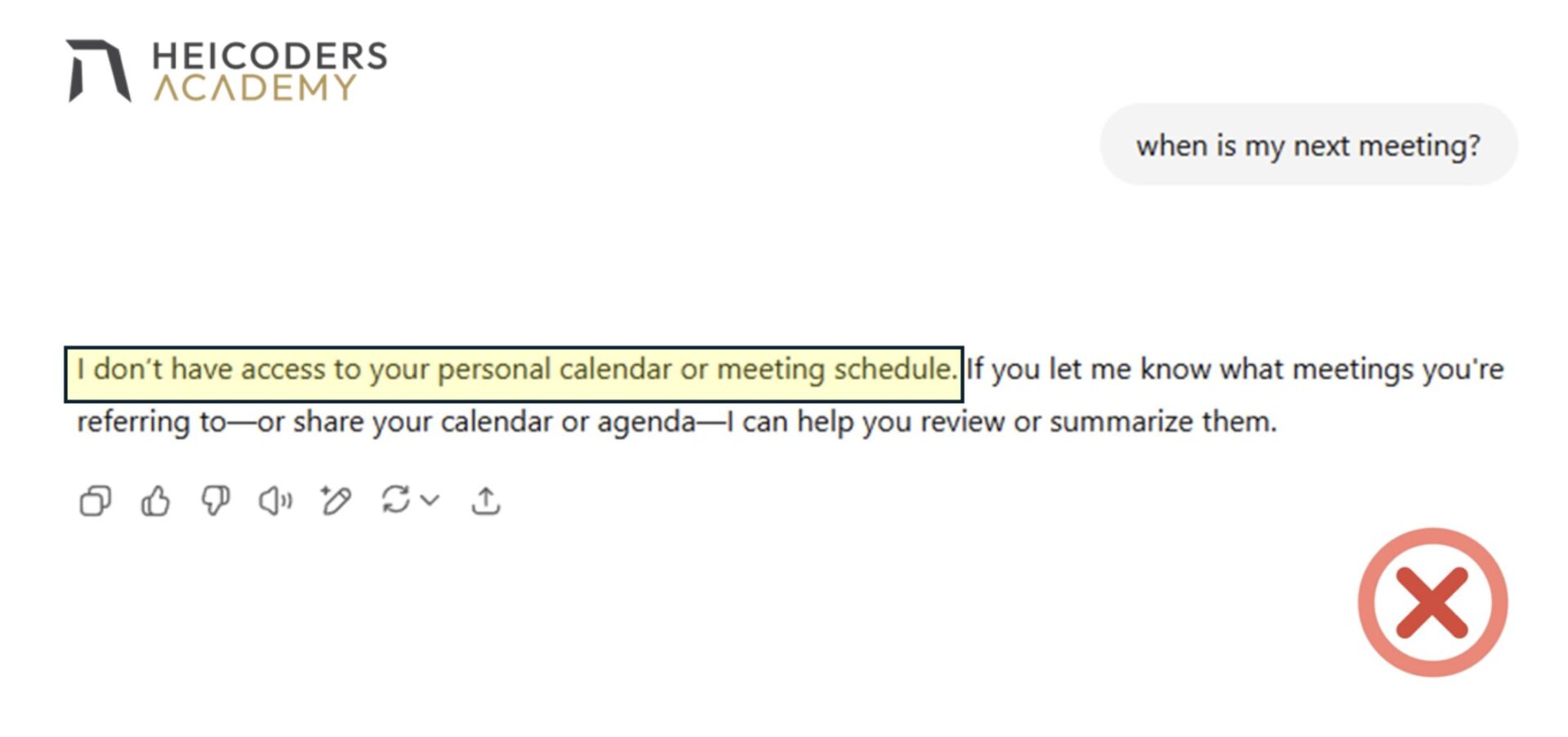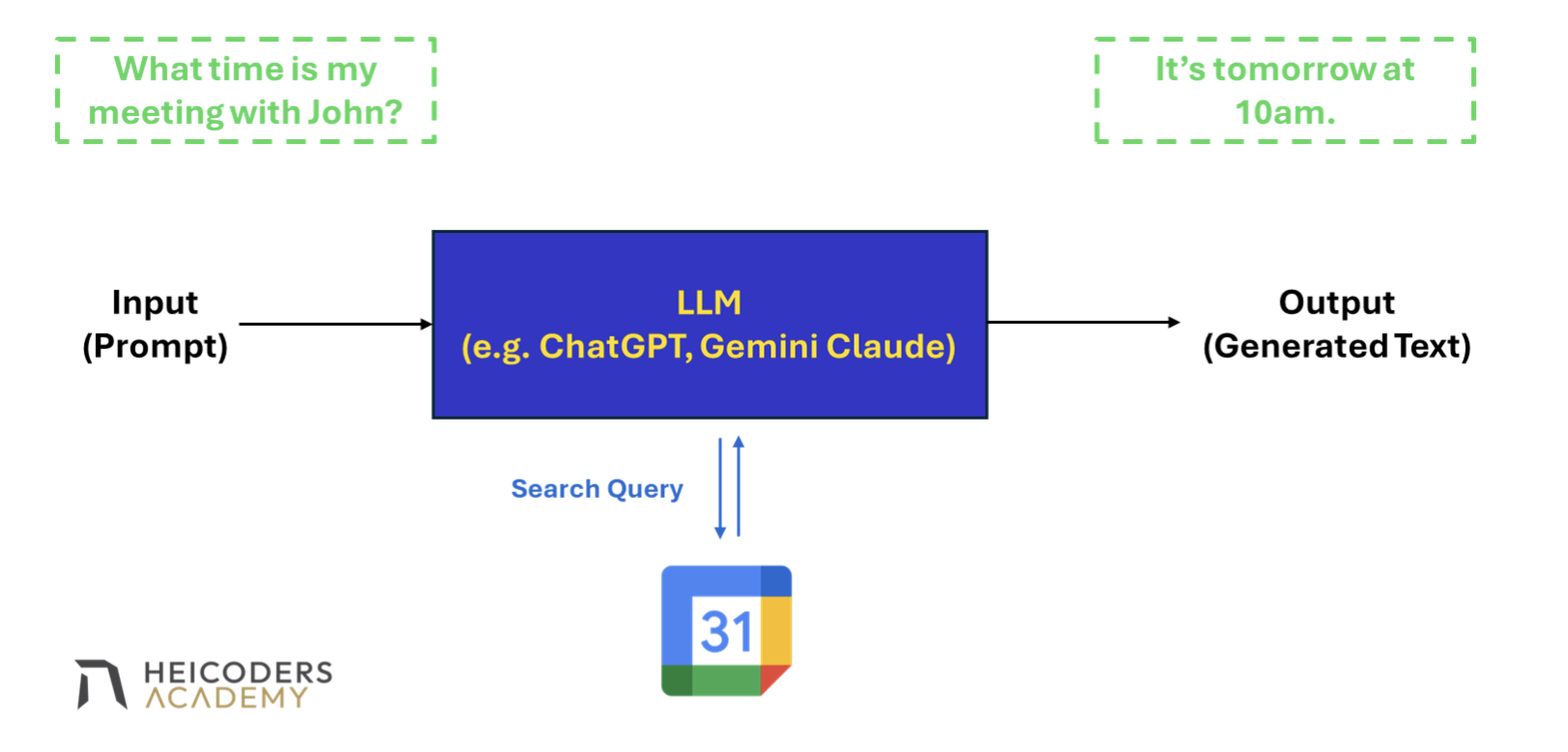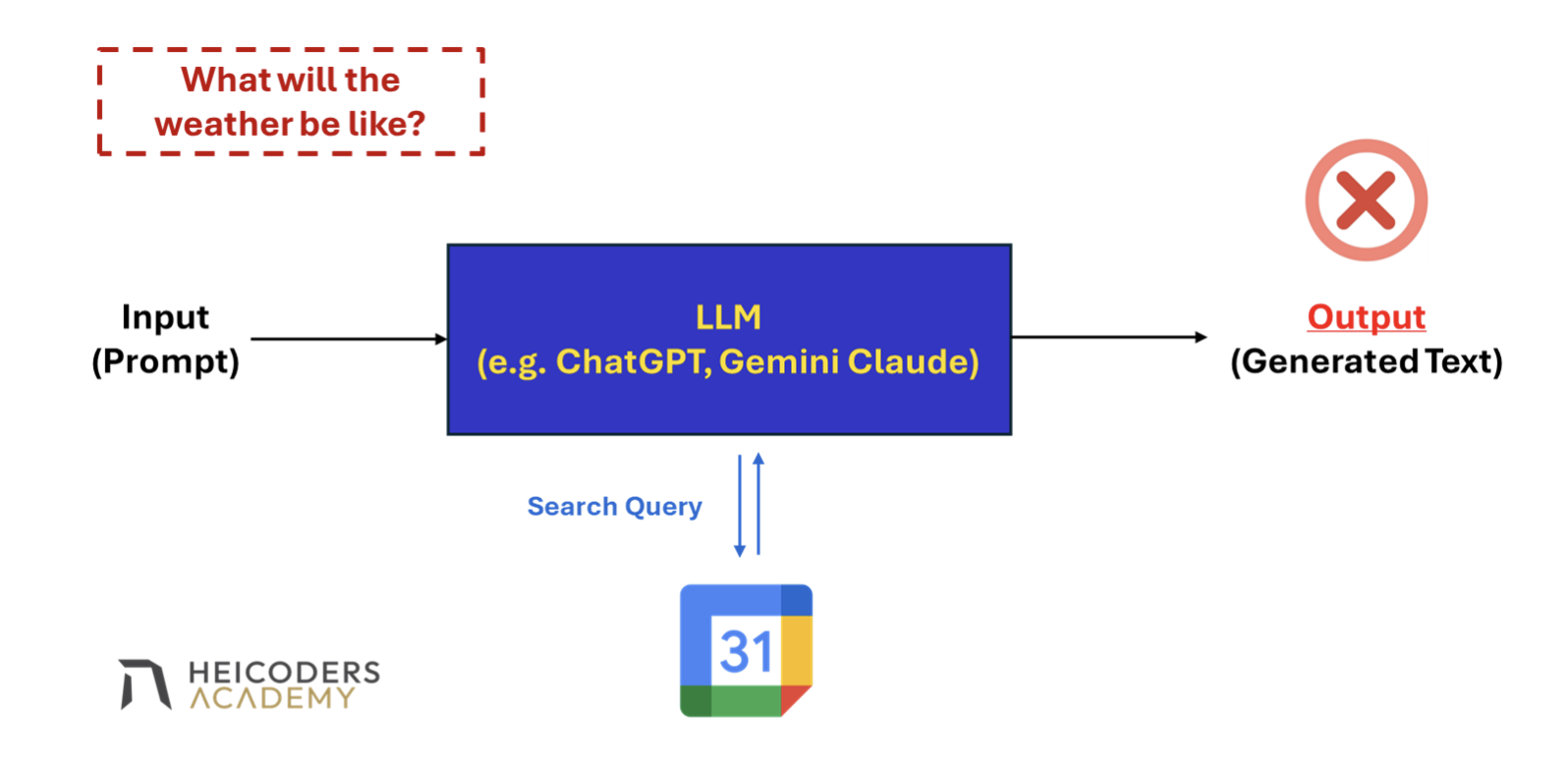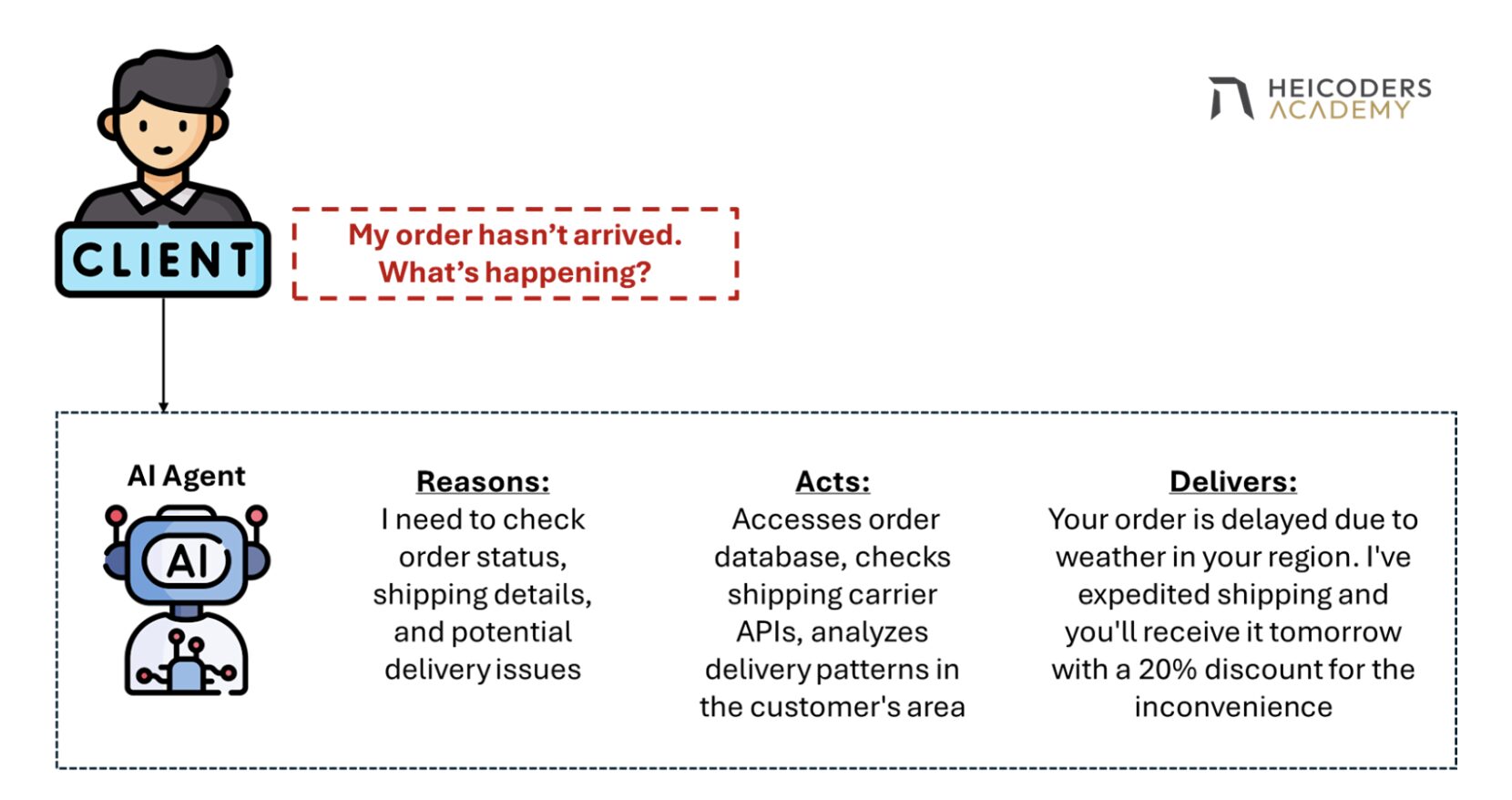Blog > Generative AI > 2025 Guide to Generative AI: AI Agents, RAG, and Workflows Made Simple
2025 Guide to Generative AI : AI Agents, RAG, and Workflows
Introduction
If you’ve been hearing terms like “Generative AI,” “AI agents,” and “autonomous AI systems” everywhere but feel overwhelmed by the technical jargon, you’re not alone. Most explanations of Generative AI and related concepts are either too complex for business professionals or too basic to provide actionable insights.
This guide takes you on a clear journey from Generative AI tools you already know, like ChatGPT, to understanding the revolutionary potential of Generative AI agents.
Whether you’re a business leader, entrepreneur, or professional looking to upskill in Generative AI, you’ll gain the knowledge needed to navigate this rapidly changing landscape.
The Three Levels of Generative AI Evolution
Understanding AI agents becomes simple when you follow this progression:
- Level 1: LLMs – Basic Generative AI chatbots like ChatGPT
- Level 2: AI Workflows – LLMs with access to external tools
- Level 3: AI Agents – Autonomous systems that make decisions
Let’s explore each level with practical examples you’ll encounter in real business situations.
1️⃣ Level 1: Large Language Models (LLMs) – The Foundation
What You Already Know about LLMs
If you’ve used Generative AI tools like ChatGPT, Google Gemini, or Claude, you understand LLMs perfectly. They follow a simple pattern: you provide input (your prompt), and they produce output based on their training data.
Example: Ask ChatGPT to “draft an email requesting a coffee chat,” and it generates a polite, professional email that’s probably more diplomatic than you’d write naturally.
The Two Key Limitations of LLMs
Despite their impressive capabilities, LLMs have critical constraints:
Limited Knowledge Scope: They can’t access personal information, company data, or real-time information. Ask ChatGPT, “When is my next meeting?” and it fails—not from lack of intelligence, but because it can’t access your calendar.
Passive Nature: LLMs are reactive. They wait for prompts and respond, but they don’t take initiative or learn from previous interactions unless you explicitly provide context.
These limitations explain why Generative AI workflows and agents were a necessary evolutionary step.

2️⃣ Level 2: Generative AI Workflows – Adding Structure and Tools
Breaking the Calendar Barrier
Generative AI workflows solve LLM limitations by giving them access to external tools. Imagine telling an LLM: “Every time I ask about personal events, check my Google Calendar first, then respond.”
Now, when you ask “When is my coffee chat with the marketing director?” the system:
- Searches your Google Calendar
- Finds the relevant information
- Provides an accurate response
This represents a fundamental shift from passive to active information gathering.

The Predefined Path Challenge
Here’s where workflows show their limitations. What if your next question is “What will the weather be like that day?” The workflow you defined says “always check Google Calendar for personal events,” but calendars don’t have weather data. The system fails because it’s following your predefined path.

Key Insight: Generative AI workflows can only follow predefined paths set by humans, no matter how sophisticated they become.
Real-World Generative AI Workflow Example: Social Media Automation
Consider this practical workflow for content creation:
- Gather: Compile news article links in Google Sheets
- Summarise: Use Perplexity to summarise articles
- Create: Use Claude to draft LinkedIn and Instagram posts
- Schedule: Automatically publish at 8 AM daily
This workflow handles complex, multi-step processes efficiently. However, if the LinkedIn posts aren’t engaging enough, you must manually rewrite the prompts. The system can’t autonomously recognise quality issues or improve itself.
Understanding RAG (Retrieval Augmented Generation)
RAG is simply a type of Generative AI workflow that helps AI models look up information before answering. When your system checks your calendar or fetches weather data, that’s RAG in action. Despite the intimidating name, it’s just information retrieval plus response generation.
3️⃣ Level 3: Generative AI Agents – The Autonomous Decision Makers
The Critical Transformation
The leap from workflows to agents involves one massive change: replacing the human decision-maker with an LLM. Instead of following your predefined steps, a Generative AI agent must reason about the best approach to achieve goals.
Using our social media example, an AI agent would think:
- “What’s the most efficient way to compile news articles?
- Should I copy-paste into a document, or compile links and use tools to fetch data?
- The user connected to Google Sheets, so that’s probably more efficient than Excel.”
The ReAct Framework: Reasoning + Acting
Generative AI agents operate on two core functions:
- Reasoning: Analysing situations, evaluating options, and determining the best approaches
- Acting: Using tools and executing tasks based on reasoning
This “ReAct” framework (Reasoning + Acting) is the most common architecture for Generative AI agents because it mirrors human problem-solving.
Autonomous Iteration: The Game Changer
Remember manually rewriting prompts to improve LinkedIn posts? A Generative AI agent handles this autonomously. It might think: “I’ve drafted a post, but I should ensure it meets engagement best practices.
I’ll add a critique step and iterate until quality standards are met.” This autonomous improvement capability means agents can:
- Recognise when outputs don’t meet standards
- Identify specific improvement areas
- Adjust approaches without human intervention
- Continuously refine performance
Real-World AI Agent Example
Consider a Generative AI agent managing customer support for an e-commerce company. When a customer asks, “My order hasn’t arrived, what’s happening?” the agent:
- Reasons: “I need to check order status, shipping details, and potential delivery issues”
- Acts: Accesses order database, checks shipping carrier APIs, analyses delivery patterns in the customer’s area
- Delivers: “Your order is delayed due to weather in your region. I’ve expedited shipping and you’ll receive it tomorrow with a 20% discount for the inconvenience”

No human agent reviewed the case or made compensation decisions. The AI agent autonomously gathered information, identified the problem, and provided both a solution and appropriate compensation while maintaining company policies.
Generative AI Business Applications and Impact
Customer Service Revolution
Generative AI agents transform customer service by analysing inquiries, accessing databases, reasoning through problems, and delivering personalised solutions. Unlike scripted chatbots, they handle multi-step processes that previously required human intervention.
Example: A billing inquiry agent doesn’t just look up account info—it analyses customer history, identifies billing patterns, cross-references usage data, and proactively suggests account optimisations.
Sales and Marketing Automation
AI agents revolutionise prospect engagement by analysing behaviour in real-time and adapting approaches accordingly. They can:
- Analyse website visits, downloads, and email engagement
- Determine optimal timing and messaging for outreach
- Automatically adjust strategies based on response patterns
- Personalise communications for thousands of prospects simultaneously
Content Creation at Scale
Content agents manage entire strategies from trend identification to distribution optimisation. They can:
- Analyse industry trends and competitor content
- Create comprehensive content calendars
- Generate multi-format content while maintaining brand consistency
- Learn from performance data to continuously improve
Measurable Business Impact
Organisations implementing AI agents report:
- 40-66% productivity improvements in automated tasks
- 30%+ cost reductions in customer service and content creation
- Scalability was previously impossible with human-only teams
- 24/7 operations with consistent quality
The Future of Generative AI Agents
Multi-Agent Systems
The next evolution involves specialised agents working together—lead identification agents collaborating with outreach agents, qualification agents, and relationship management agents. Each specialises in specific functions while contributing to broader objectives.
Predictive and Proactive Capabilities
Future agents will be increasingly predictive, identifying opportunities and problems before they become apparent. Financial agents will predict cash flow challenges weeks in advance; marketing agents will identify emerging trends before competitors.
Enhanced Learning
Next-generation agents will learn from successes and failures across contexts, applying insights from one domain to another and developing institutional knowledge that compounds their effectiveness over time.
Getting Started: Your Path to Generative AI Mastery
Building Foundational Skills
Success with AI agents starts with mastering generative AI fundamentals:
- Effective prompting techniques
- Workflow design principles
- Tool integration strategies
- Performance monitoring methods
Implementation Strategy
Start with well-defined, simple use cases that provide clear value:
- Identify repetitive decision-making processes
- Begin with manageable consequences for errors
- Scale gradually as confidence and expertise grow
- Focus on measurable business outcomes
Professional Development with Generative AI
The demand for professionals who can bridge AI technology and business applications is growing rapidly. The GA100: Generative AI for Automation and Productivity course at Heicoders Academy provides comprehensive training in:
- Practical generative AI implementation
- Workflow and agent development
- Business integration strategies
- Strategic thinking for AI adoption
The course is designed for professionals with diverse backgrounds, recognising that effective AI implementation requires business acumen as much as technical skills.
Building Competitive Advantage
Organisations developing AI agent capabilities early gain significant advantages:
- Operational efficiency improvements
- Organisational knowledge and capabilities
- Ability to innovate and adapt as technology evolves
- Market positioning for AI-driven competition
Key Takeaways
Here are some key takeaways you should glean from this article:
1️⃣ AI agents aren’t just powerful chatbots—they’re autonomous decision-making systems that represent a significant shift in the capabilities of Generative AI.
2️⃣ The progression is logical: LLMs → Workflows → Agents, with each level building on the previous while adding crucial capabilities.
3️⃣ Business impact is measurable: Organisations see significant productivity gains, cost reductions, and new operational capabilities.
4️⃣ The future is autonomous: AI agents will increasingly handle complex decision-making, freeing humans for strategic and creative work.
5️⃣ Early adoption matters: Organisations and professionals who develop AI agent capabilities now will have significant advantages as the technology becomes widespread.
Frequently Asked Questions
What is Generative AI and how does it differ from traditional AI?
Generative AI refers to models like ChatGPT and Claude that create new content, responses, or data. Unlike traditional AI, it generates human-like outputs.
What's the main difference between AI workflows and AI agents?
Workflows follow predefined paths set by humans, while agents make autonomous decisions about how to achieve goals.
Do I need programming skills to work with AI agents?
Not necessarily. Many platforms provide visual interfaces, though technical literacy helps with design and implementation.
How do AI agents learn and improve?
They analyse results, incorporate feedback, and build institutional knowledge that makes them more effective over time.
What's the ROI of implementing AI agents?
Businesses typically see 40-66% productivity improvements and 30%+ cost reductions, plus the ability to scale previously constrained operations.
How will AI agents affect employment?
They’ll likely transform rather than eliminate jobs, with humans focusing on strategy, creativity, and relationship management while agents handle routine decisions.
The evolution from simple AI tools to autonomous agents represents one of the most significant technological advances of our time. Understanding this progression provides the foundation for navigating the AI-driven future, whether you’re leading organisational transformation or advancing your career in this rapidly growing field.
Ready to master practical skills in Generative AI? Explore the GA100: Generative AI Course for Automation and Productivity course at Heicoders Academy and start building the expertise that will define the future of work.
Real-World Generative AI Workflow Case Study: How We Created This Article
This article itself is a case study in Generative AI workflow implementation:
- Input: Jeff Su’s video “AI Agents, Clearly Explained”
- Process: AI-powered analysis → SEO research → Content creation → Human editing
- Output: SEO-optimised article tailored for the GA100 course promotion
- Result: You just read 1,700 words created in 2 hours instead of 2 days
This demonstrates the 10x productivity gains possible with proper AI workflow design – skills you’ll master in our GA100 course. The human decision-maker (our team) defined the strategy, goals, and quality standards, while AI handled the research, analysis, and writing execution.
If you are interested, we highly recommend that you take some time to watch this video. Jeff did a fantastic job of explaining Generative AI in a very layperson-friendly way.
The evolution from simple AI tools to autonomous agents represents one of the most significant technological advances of our time. Understanding this progression provides the foundation for navigating the AI-driven future, whether you’re leading organisational transformation or advancing your career in this rapidly growing field.
💡 Pro Tip: Still weighing your options? If you want an AI course that checks all the boxes – hands-on, affordable, beginner-friendly, and SSG-funded – Heicoders Academy’s Gen AI Course (GA100) is one of the best ways to get started. 😉


Upskill Today With Heicoders Academy
Secure your spot in our next cohort! Limited seats available.
